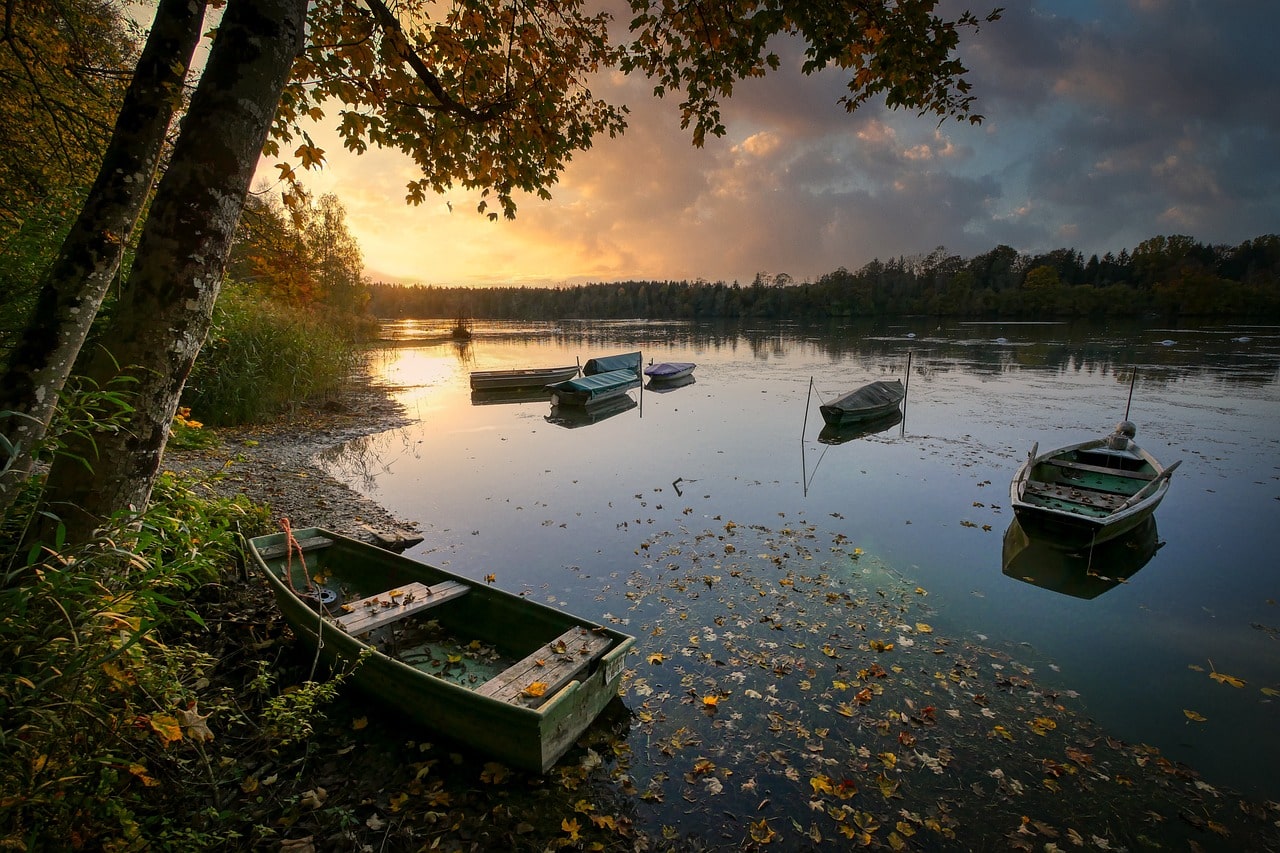Little did the municipal leaders of Tuscaloosa know that when Harris Lake and Lake Nicol were established to provide water to the city, these two reservoirs would become well-liked recreational lakes in the Alabama metropolitan area. The city quickly outgrew Harris Lake, the first built in 1929. Lake Nicol was built upstream along Yellow Creek in 1956. By 1970, the city decided a larger reservoir was needed and built Lake Tuscaloosa nearby on the North River. Harris Lake, with 220 acres, and Lake Nicol, with 384 acres, officially became backup supplies and a welcome recreational spot just north of the city.
Harris Lake was impounded by two of the state’s first arch dams. The reservoir holds about a billion gallons of water, although not all can be withdrawn. Long and narrow along the former creek’s path, Harris Lake has almost six miles of wooded, undeveloped shoreline. A public access site along the northeast shore offers plenty of space for launching a canoe or kayak. Although no designated swim areas are at either Lake, recent regulation changes no longer prohibit swimming. Gas motors are prohibited on Harris Lake, but a canoe or kayak can easily reach all of the secluded coves and arms. This leaves Harris Lake as a haven from motorized noise. Currently, the water from Harris Lake is used for industrial purposes. Fishing is permitted with largemouth bass, bluegill, crappie, and catfish catches. Locals can provide more detailed fishing information.
Lake Nicol was the second project to create a ready water supply for the area. The reservoir acts as a backup to the main supply from Lake Tuscaloosa. The dam is located directly above the northernmost reach of Harris Lake and similarly stretches along the former creek’s route. Lake Nicol has even more arms and coves than Harris Lake, with a 12-mile shoreline covered in oak and pine. Near the northern end of the reservoir, a dirt road leads to what is called Nicol Park. Although the official City of Tuscaloosa website does not publicize the park, it is known that there is a grassy boat launch and a picnic pavilion at this location. Motorized boats can be used here, but speeds are capped at 25 mph, and the boats must stay at least 50 feet from motionless boats, canoes, and kayaks. Swimming at Lake Nicol is at your own risk. As with Lake Harris, little information about fish species is available.
Both Harris Lake and Lake Nicol are popular places for birdwatching. The second-growth forest and expanses of shoreline offer great opportunities to view brown-headed nuthatch, grey catbirds, blue grosbeaks, eastern kingbirds, eastern bluebirds, and American goldfinches. During periods of lower water levels, egrets, herons, and a variety of shorebirds will be found along the newly exposed mud flats. Bald eagles and osprey nest near the lakes and, along with hawks and owls, prowl the shorelines for their next meal.
Although both lakes feel secluded, they are near several residential neighborhoods and a large shopping center. The city owns the buffer zone around both lakes and designated the shoreline as a ‘refuge’ or ‘reserve.’ Planning is still underway for any final design for the property, but discussion shows there are hopes for marked hiking trails and more picnic grounds. Tuscaloosa is fortunate to have both lakes near the city, providing outdoor pleasure to residents and visitors.
There are no lodgings directly on either Harris Lake or Lake Nicol. Many RV parks are near Tuscaloosa, with a campground on Lake Tuscaloosa’s west side. An Army Corps of Engineers Campground is located a few miles east of Harris Lake and Lake Nicol at the Deerlick Creek Recreation Area on Scales Lake.
Tuscaloosa has a variety of large hotels, a few bed & breakfasts, and several small inns. As home to the University of Alabama, Tuscaloosa is a metropolitan city still retaining much Southern charm. Several bed & breakfasts cater specifically to those traveling to the area to cheer on the Crimson Tide. Football fans will enjoy the Paul W Bryant Museum with its football memorabilia. The Children’s Hands-On Museum and the Tuscaloosa Museum of Art allow everyone to engage the senses with interesting visuals and creative spaces. The Mercedes-Benz US International Visitor Center and Factory Tour will charm automotive buffs, and the Jemison-Van de Graaff Mansion provides a perfect glimpse into the palatial living spaces of the 1860s. The city has excellent restaurants and many upscale pubs and nightspots that appeal to the younger crowd.
So, although Tuscaloosa doesn’t publicize its beautiful small recreation lakes, anyone visiting the area should know they are there to serve as a quiet place to enjoy nature, paddle the quiet waters, and generally refill their stores of solitude before the Big Game.

